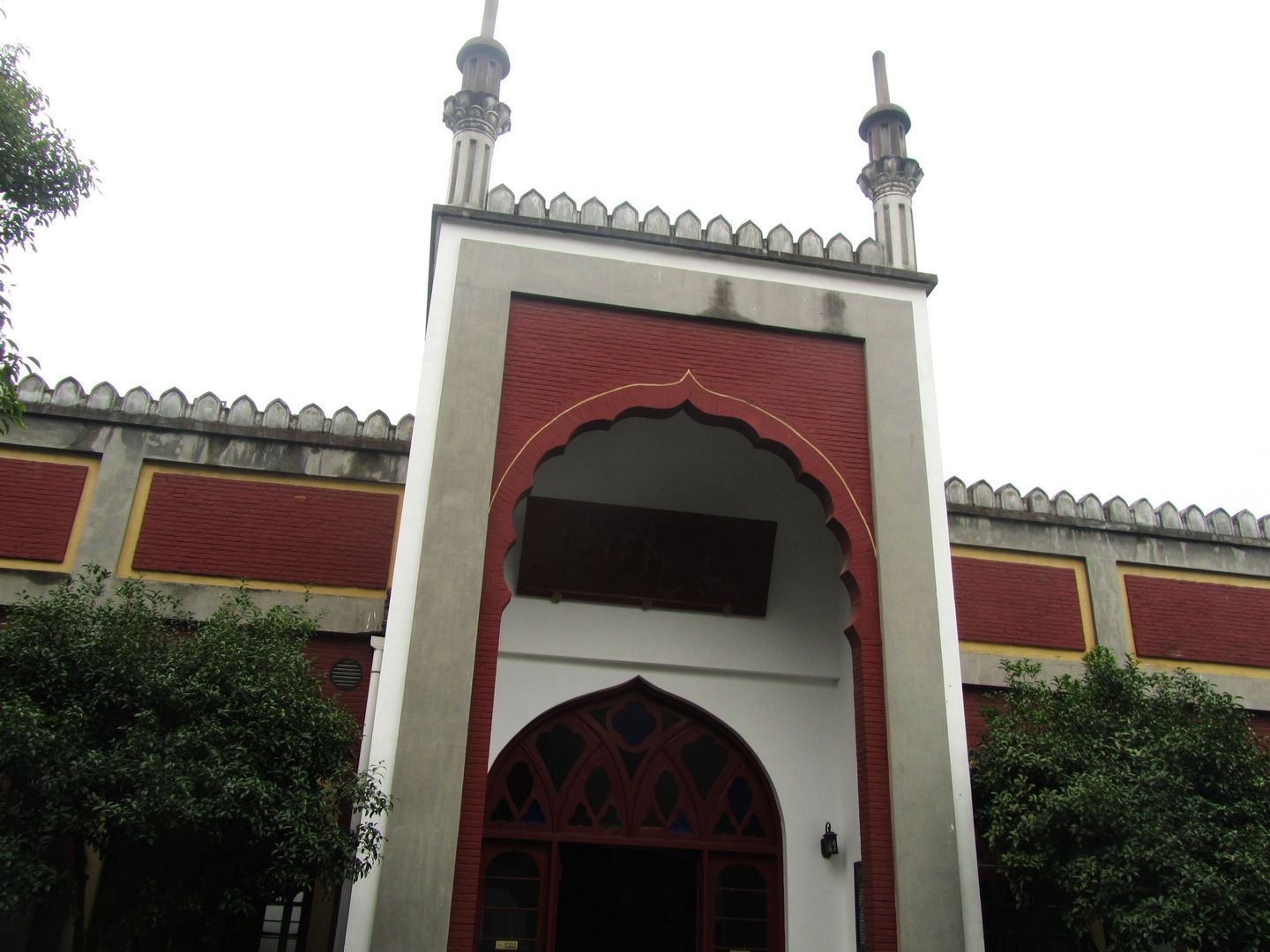Description
Property Name: The Great Mosque of Hangzhou
Inventory No: 86-571-1
Date of infill of the inventory form: 2009-08-20
Country (State party): China
Province: Zhejiang
Town: Hangzhou
Geographic coordinates: 30° 16′ 26.32″ N
120° 10′ 22.71″ E
Historic Period: 14th century, 1st half
Year of Construction: 1314-1320
Style: Hui
Original Use: Mosque
Current Use: Mosque
Architect: Unknown
Significance
The Great Mosque of Hangzhou has been one of the 4 oldest mosques in China. As it has many interventions during dynasties; the complex has changed and been enlarged. Today, the mosque is rated to be one of the largest Islamic ensembles in China. The Mosque is known to have a long history. It is presumed that the mosque had been first founded during Tang Dynasty (618-907), but there is no evidence of it. However, it had been built many times with many interventions and survived till today. The mosque is also known as ‘Phoenix Mosque’ because of its significant hipped roofs that are similar to the birds’ wings, ready for flight. As a mosque belonging to the period of Islam introduction to China, the approach of integration of Islamic features with the local architecture is comprehended.
Selection Criteria
ii. to exhibit an important interchange of human values, over a span of time or within a cultural area of the world, on developments in architecture or technology, monumental arts, town-planning or landscape design
vi. to be directly or tangibly associated with events or living traditions, with ideas, or with beliefs, with artistic and literary works of outstanding universal significance
State of Preservation
The Great Mosque of Hangzhou is presumed to be built during Tang Dynasty but till today the complex got over many interventions, renovations, enlargements…etc. Different sources mention different dates for these interventions. First of them is that, because lack of evidence for the mosque’s foundation during Tang Dynasty; the mosque is presumed to be built between 1131-1149 and it was rebuilt and extended first in 1281, at an age of 100, when a Muslim preacher Aladdin came in Hangzhou and financed the required repairs. (Some other source mentions that the mosque was rebuilt in between 1314 and 1320 by Aladdin.) He also extended the prayer hall which had been composing of one domed- square space, formerly. Eventually the prayer hall has been enlarged from two sides with 2 extra domed spaces in each, smaller in size. Also a new portal has been built during this period. Besides another extension occurred again in 1451-93 and renovated in 1670. The complex was partially demolished in 1929 as a result of widening the main road and thus the portal and a part of the area in front of the prayer hall has been lost. The gate and the five-storied wooden Wangyue Pavilion (a place to view the moon) on the top of the gate were removed. Finally, a partial reconstruction took place in 1953. Mosque was recently rebuilt and re-opened in 1984 (under the Political Leadership of Deng Xiaoping).
The complex could not keep its original settlement and architectural features at all, nonetheless many cultural relics and artworks, including some wooden lections and steles, are preserved in the mosque. The Mosque is now under careful protection from 1953 on.
References
Chang, Jing Qi. 1982. Islamic Architecture in China. In The Changing Rural Habitat; Volume 2: Background Papers. Brian Brace Taylor (ed). Singapore: Concept Media/The Aga Khan Award for Architecture.
Dazhang, Sun. 2003. Ancient Chinese Architecture: Islamic Buildings. New York: Springer-Verlag/Wien. p 125-126, 143.
Jing-qui, Zhang. 1982. Mosques of Northern China. In MIMAR 3: Architecture in Development. Singapore: Concept Media Ltd., 58.
Mitchell, George. 1978. Architecture of the Islamic World, London: Thames and Hudson, 280.
Petersen, Andrew. 1996. “China”. In Dictionary of Islamic Architecture. London: Routledge, 52-54.
Xiaowei, Luo. “China” in Ed. Martin Frishman and Hasan-Uddin Khan. 1994. The Mosque: History, Architectural Development and Regional Diversity. London: Thames and Hudson, 211, 217-218.
Website of Archnet; http://www.archnet.org


